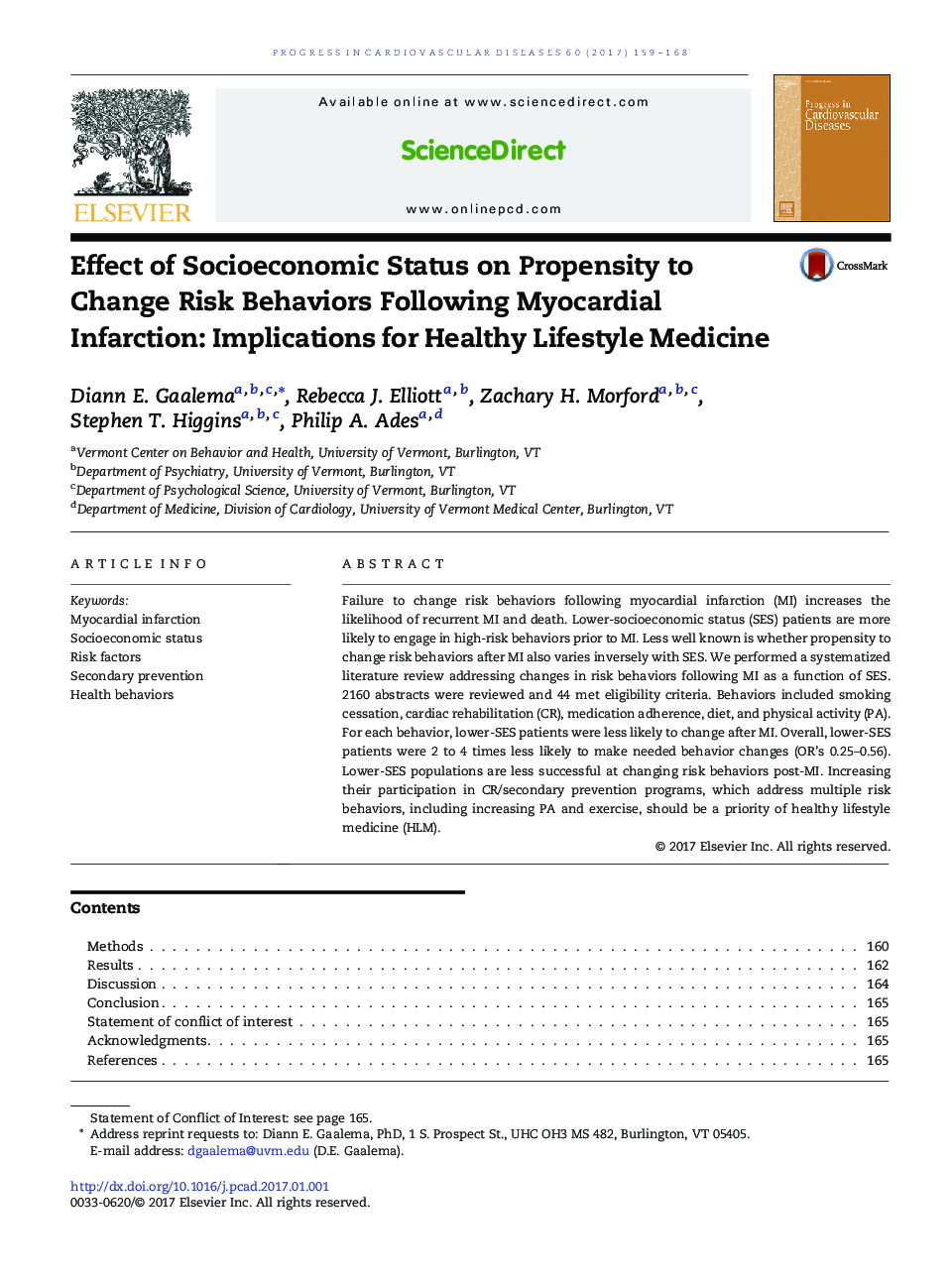| Article ID | Journal | Published Year | Pages | File Type |
|---|---|---|---|---|
| 5619528 | Progress in Cardiovascular Diseases | 2017 | 10 Pages |
Failure to change risk behaviors following myocardial infarction (MI) increases the likelihood of recurrent MI and death. Lower-socioeconomic status (SES) patients are more likely to engage in high-risk behaviors prior to MI. Less well known is whether propensity to change risk behaviors after MI also varies inversely with SES. We performed a systematized literature review addressing changes in risk behaviors following MI as a function of SES. 2160 abstracts were reviewed and 44 met eligibility criteria. Behaviors included smoking cessation, cardiac rehabilitation (CR), medication adherence, diet, and physical activity (PA). For each behavior, lower-SES patients were less likely to change after MI. Overall, lower-SES patients were 2 to 4 times less likely to make needed behavior changes (OR's 0.25-0.56). Lower-SES populations are less successful at changing risk behaviors post-MI. Increasing their participation in CR/secondary prevention programs, which address multiple risk behaviors, including increasing PA and exercise, should be a priority of healthy lifestyle medicine (HLM).
